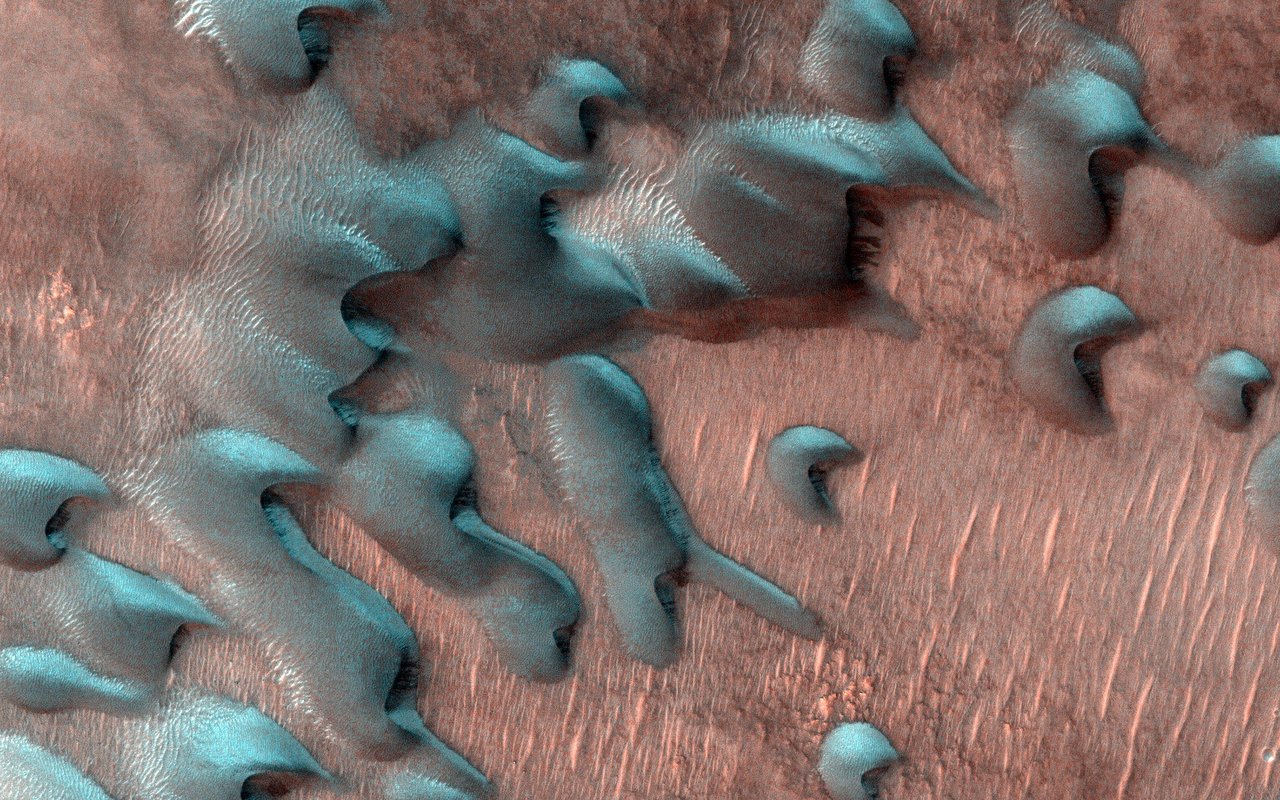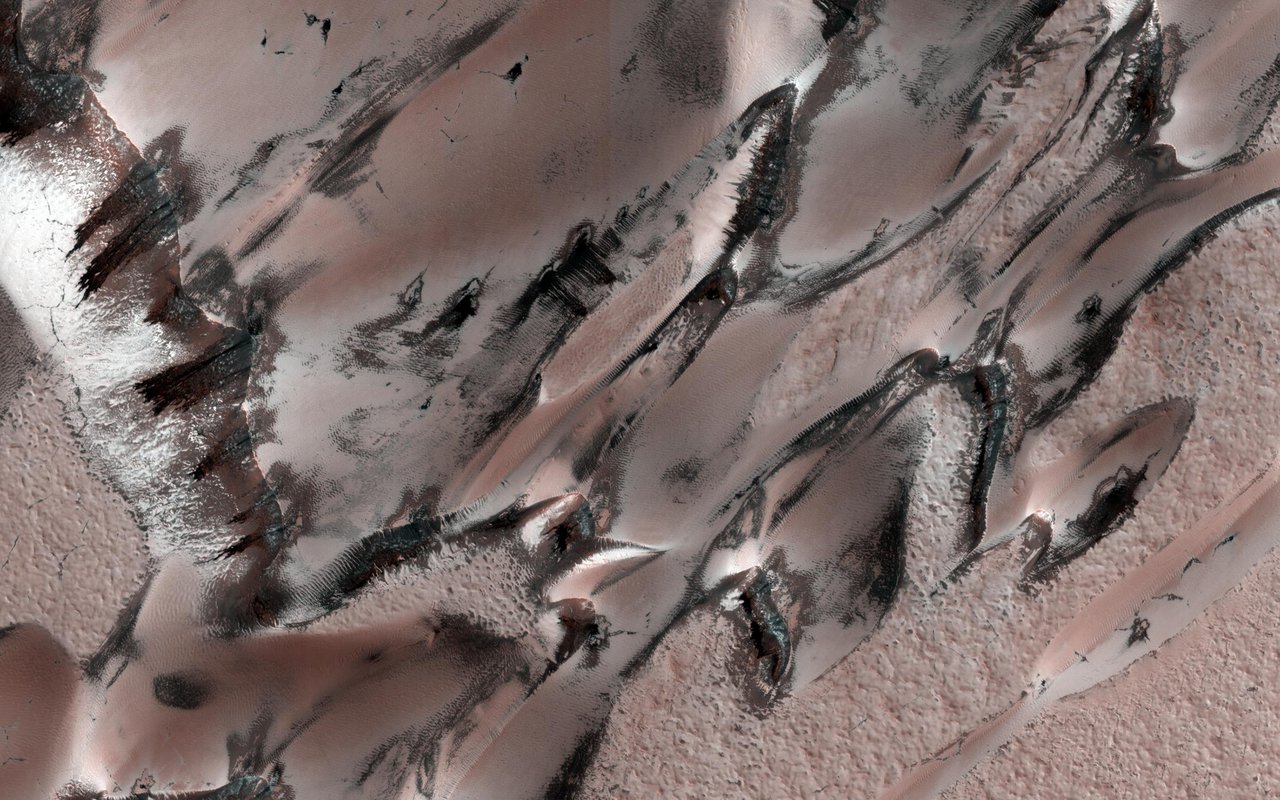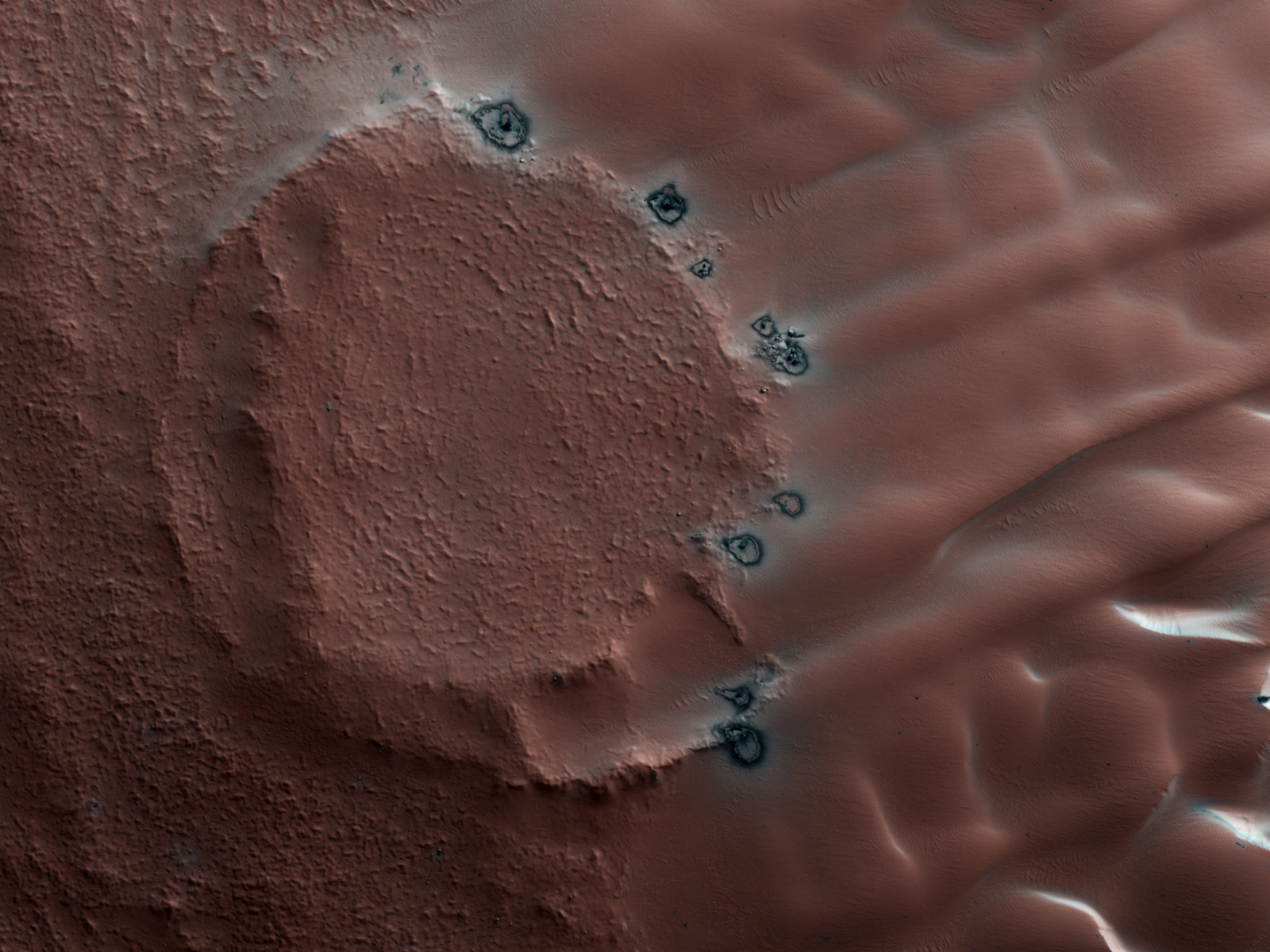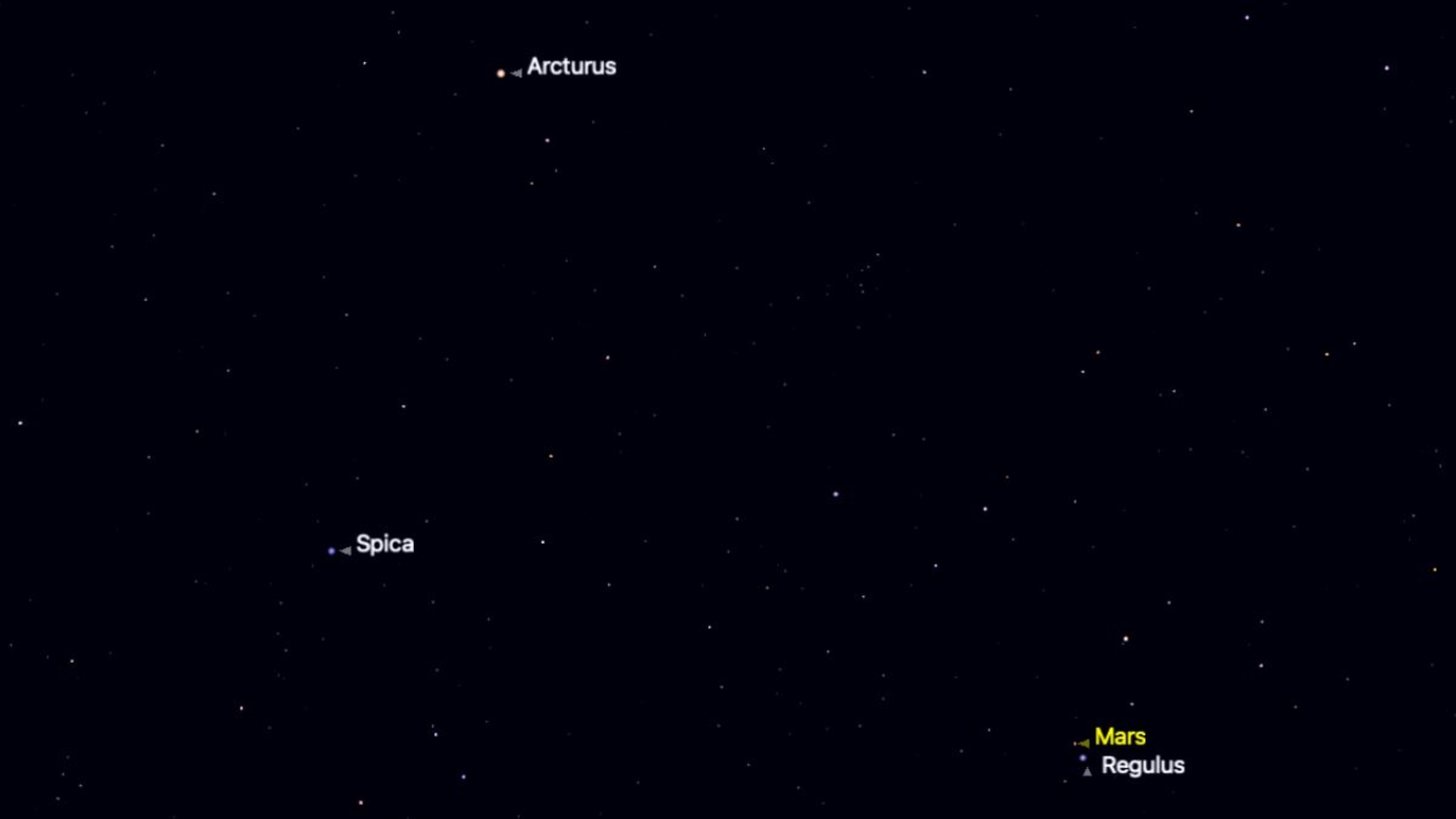Winter on Mars looks beautiful in this festive NASA video
"We see spider-shaped features, fans, geysers, Dalmatian spots, fried eggs, all kinds of unique objects," NASA says.
NASA is making the case for a "winter wonderland" on Mars.
"Dreaming of a white Christmas" might never bring to mind the alien landscapes that appear at frigid corners of the Red Planet. But the space agency is enthused by it all. Its many missions over the past several decades reveal icy oddities on Mars, as well as how much Mars sometimes resembles Earth.
As NASA is now one mission deep into its Artemis program, learning how humans can thrive off our planet is crucial. Water ice is a valuable discovery to that end. And the new video from the Jet Propulsion Laboratory (JPL) in California — a major hub for NASA's robotic explorers in space — reveals what snow, frost and ice looks like on Mars.
Related: Mars is a 'winter wonderland' in this frosty (and stunning) image


"If you go to the right locations, you will find water ice, just like the one we have on Earth," JPL Mars scientist Sylvain Piquex says in the Dec. 21 video, which NASA released on YouTube. When NASA's Phoenix Mars lander scraped the arctic Martian ground in 2008, it saw water ice just below the surface.
"This is the kind of water ice that astronauts could potentially use in the future when we go there," Piquex adds.
Mars also has dry ice, a solid form of carbon dioxide (CO2). Rather than melt, like water ice does, CO2 ice sublimates. And as this material turns from solid to gas, it creates alien landscapes.
Breaking space news, the latest updates on rocket launches, skywatching events and more!
"For example, we see spider-shaped features, fans, geysers, Dalmatian spots, fried eggs, all kinds of unique objects that are really challenging to understand, but that are beautiful and unique to Mars," Piquex says.

Ice crystals also fall on Mars, like snow on Earth. When Phoenix used its Canadian-built LIDAR (or, light detection and ranging) to shoot a laser into the planet's sky, it detected water ice crystals falling from a cloud.
Frost also coats some places on Mars. NASA's Viking landers captured images of water frost in the 1970s, and more recently, its Odyssey spacecraft and the Mars Reconnaissance Orbiter have observed its CO2 frost.
"CO2 frost [is] something that we don't have on Earth. It is extremely cold where you would find CO2 ice, something like -190 degrees Fahrenheit," Piquex says.
That's much colder than a December "bomb cyclone" that the U.S. is gearing up to face this weekend.
But NASA put winters on these two planets into perspective in an accompanying statement.
"No region of Mars gets more than a few feet of snow, most of which falls over extremely flat areas," the statement reads. "Cold as it is, don’t expect snow drifts worthy of the Rocky Mountains."
Follow Doris Elin Urrutia on Twitter @salazar_elin. Follow us on Twitter @Spacedotcom or on Facebook.
Join our Space Forums to keep talking space on the latest missions, night sky and more! And if you have a news tip, correction or comment, let us know at: community@space.com.

Doris is a science journalist and Space.com contributor. She received a B.A. in Sociology and Communications at Fordham University in New York City. Her first work was published in collaboration with London Mining Network, where her love of science writing was born. Her passion for astronomy started as a kid when she helped her sister build a model solar system in the Bronx. She got her first shot at astronomy writing as a Space.com editorial intern and continues to write about all things cosmic for the website. Doris has also written about microscopic plant life for Scientific American’s website and about whale calls for their print magazine. She has also written about ancient humans for Inverse, with stories ranging from how to recreate Pompeii’s cuisine to how to map the Polynesian expansion through genomics. She currently shares her home with two rabbits. Follow her on twitter at @salazar_elin.
